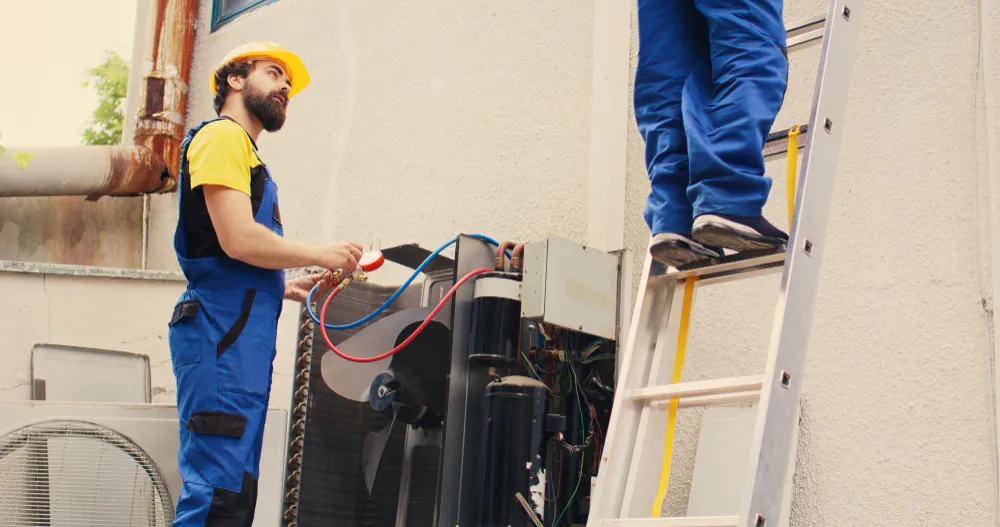Your HVAC system plays a vital role in maintaining comfort in your home year-round. But like all mechanical systems, it won’t last forever. At a certain point, continuing to repair an aging or inefficient unit becomes more expensive—and less effective—than simply replacing it.
In this article, we’ll help you recognize the top signs it’s time to replace your HVAC system, so you can make an informed decision before facing an emergency breakdown.
1. Your System Is Over 10–15 Years Old
The average lifespan of an HVAC system is 10 to 15 years, depending on the brand, model, and how well it’s been maintained. If your unit is reaching or has passed this age range, it’s worth considering a replacement—especially if you’ve noticed performance issues.
Older systems:
-
Are less energy-efficient
-
May use outdated (and now banned) refrigerants like R-22
-
Are more prone to breakdowns
2. Frequent Repairs Are Becoming the Norm
Are you constantly calling your HVAC technician? While occasional maintenance is normal, frequent repairs are a red flag. If you’ve spent several hundred (or thousand) dollars in repairs over the past year or two, you could save money by investing in a new, reliable system.
Tip: If a repair costs more than 50% of the value of a new system, replacement is often the smarter choice.
3. Rising Energy Bills
If your energy bills are steadily climbing despite no change in usage habits, your HVAC system might be to blame. Aging systems lose efficiency over time, forcing them to work harder—and use more energy—to achieve the same level of comfort.
Modern HVAC systems offer significantly higher SEER ratings (Seasonal Energy Efficiency Ratio) and can reduce your monthly energy costs.
4. Inconsistent Temperatures Throughout the Home
Are some rooms too hot while others are freezing? Uneven temperatures are a common sign that your HVAC system is struggling to distribute air properly. This can result from:
-
Worn-out components
-
Failing ductwork
-
An undersized or oversized system
In many cases, replacing your system with a properly sized, modern unit can restore balanced comfort throughout your home.
5. Unusual Noises or Odors
Strange sounds like grinding, banging, or rattling—or odd smells coming from vents—are not normal and shouldn’t be ignored. These symptoms can signal:
-
Electrical issues
-
Mold growth
-
Broken internal parts
If your system frequently makes unsettling noises or emits bad odors, it may be nearing the end of its lifespan.
6. Poor Indoor Air Quality
Older systems are less effective at filtering out dust, allergens, and airborne pollutants. If you’ve noticed an increase in respiratory issues, dry air, or excessive dust in your home, your HVAC system may no longer be providing the air quality your family needs.
7. Your System Uses R-22 Refrigerant
If your system still relies on R-22 (Freon), it’s time to replace it. R-22 was phased out due to its harmful environmental effects, and it is now expensive and hard to find. New systems use eco-friendly refrigerants and comply with current energy and environmental standards.
Final Thoughts
Replacing your HVAC system is a significant investment—but it’s one that pays off in lower utility bills, fewer repairs, and improved comfort and air quality. Recognizing the signs early allows you to plan your replacement, rather than being caught off guard by a sudden breakdown.
Ready to upgrade your home comfort? Contact KAC Express today for a free consultation and discover the best HVAC replacement options for your needs and budget.


0 Comments